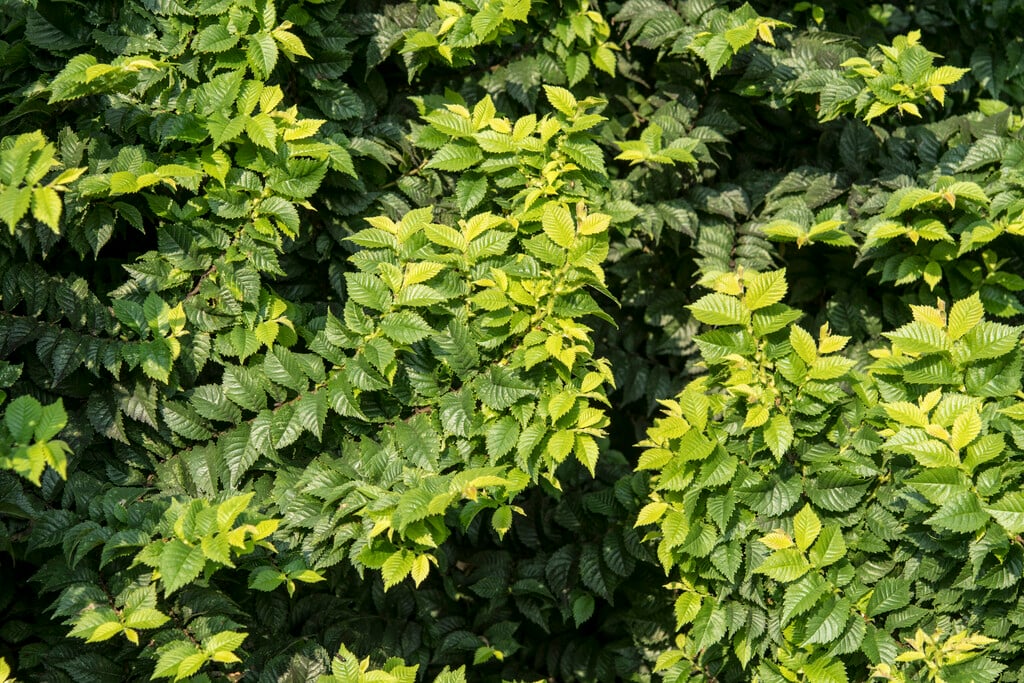Ulmus × hollandica 'Jacqueline Hillier'
Dutch elm 'Jacqueline Hillier'
Slow-growing, deciduous shrub of neat, dense, rounded habit about 2.5m tall, with elliptic, mid-green leaves 3.5cm long, arranged in two rows along the stems, turn yellow in autumn, and last on the tree until early winter. Flowers are not usually produced
Synonyms
Ulmus × elegantissima 'Jaqueline'Ulmus × elegantissima 'Jacqueline Hillier'
see moreUlmus minor 'Jacqueline Hillier'
Size
Ultimate height
1.5–2.5 metresTime to ultimate height
5–10 yearsUltimate spread
1.5–2.5 metresGrowing conditions
Moisture
Well–drainedpH
Acid, Alkaline, NeutralColour & scent
| Stem | Flower | Foliage | Fruit | |
| Spring | Green | |||
|---|---|---|---|---|
| Summer | Green | |||
| Autumn | Green Yellow | |||
| Winter |
Position
- Full sun
- Partial shade
Aspect
East–facing or South–facing or West–facing
Exposure
Exposed or Sheltered Hardiness
H7Botanical details
- Family
- Ulmaceae
- Native to GB / Ireland
- No
- Foliage
- Deciduous
- Habit
- Bushy
- Genus
Ulmus are deciduous trees, often large, with elliptic or ovate leaves often colouring well in autumn; inconspicuous flowers are followed by winged fruits
- Name status
Accepted
How to grow
Cultivation
Grow in any well drained soil in full sun or partial shade
Propagation
Propagate by softwood cuttings in summer. Chip budding and grafting may also be used
Suggested planting locations and garden types
- City and courtyard gardens
- Cottage and informal garden
- Flower borders and beds
- Hedging and screens
Pruning
Pests
May be susceptible to aphids, bark beetles, horse chestnut scale and elm gall mites
Diseases
May be susceptible to Dutch elm disease, coral spot, honey fungus and phytophthora
Love gardening
Sign up to receive regular gardening tips, inspiration, offers and more
View our Privacy Policy
Get involved
The Royal Horticultural Society is the UK’s leading gardening charity. We aim to enrich everyone’s life through plants, and make the UK a greener and more beautiful place.

